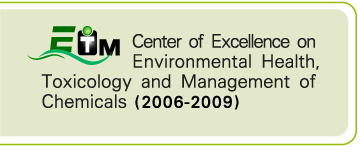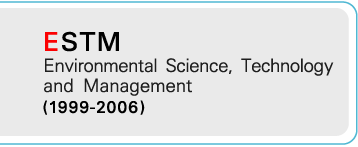Development of a Biological Nutrient Removal Model with the Shortened Operating Cycle Time for AnA2/O2 SBR2
Assoc. Prof.Dr. Prayoon Fongsatitkul Faculty of Public Health, Mahidol University This research aimed to investigate the role of the long sludge age and short cycle time of AnA2/O2, in an 8-hr operation cycle, to enhance organics and nutrient (N and P) removal efficiency from slaughterhouse wastewater. Effects of the first anoxic time/second anoxic time ratios… (read more)
 Center of Excellence on Environmental Health and Toxicology (EHT)
Center of Excellence on Environmental Health and Toxicology (EHT)










